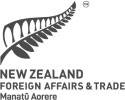Supply Chains, Government:
On this page
Summary
- South Korea’s economy is projected to grow 0.8 percent in 2025, with early-year contraction offset by modest Q2 export-driven recovery. President Lee Jae Myung has launched stimulus measures including universal consumption vouchers and a focus on AI investment to address weak domestic demand and structural challenges. Despite stable export figures so far, US tariffs and slowing Chinese demand pose significant risks to the South Korean economy. The recent tariff deal with the US, which leaves key questions unanswered around the level of sectoral tariffs and major investment commitments, signals potential economic instability ahead.
Report
In July 2025, the International Monetary Fund (IMF) revised its forecast for South Korea’s economic growth, lowering it to 0.8 percent for the year, down 0.2 percentage points from its previous estimate. This places South Korea behind New Zealand (1.4 percent), Australia (1.6 percent), and slightly ahead of Japan (0.6 percent). The downgrade reflects persistent challenges including weak domestic demand, external trade pressures, and long-term structural issues. The Bank of Korea has aligned its forecast with the IMF, citing external tariff pressures and slowing global growth as key factors behind the subdued outlook.
The first quarter of 2025 saw a 0.2 percent contraction in GDP, largely driven by a 3.1 percent decline in construction investment, signalling fragility in domestic economic activity. However, the second quarter brought a modest recovery, with 0.6 percent growth, primarily fuelled by a 4.2 percent increase in exports – a surprising rebound in light of global uncertainties.
Government’s Economic Response
Since his inauguration in June 2025, President Lee Jae Myung has made economic revitalisation a central priority for his administration. Acknowledging South Korea’s structural and cyclical challenges, he has launched a series of stimulus measures aimed at boosting domestic consumption and long-term competitiveness. A flagship initiative is a universal cash handout programme, introduced in July, which distributed consumption vouchers ranging from 150,000 KRW to 550,000 KRW (approx. NZD 180–670) to all citizens and residents, depending on income level and region. These vouchers are restricted to use at small local businesses, in an effort to shield those business owners from South Korea’s economic downturn. A second round of the voucher programme is expected in September or October.
At the macroeconomic level, President Lee has established an emergency economic task force and targeted investments in emerging technologies with a priority focus on artificial intelligence (AI). This reflects a strategic pivot toward innovation-led growth, aiming to position South Korea as a global leader in emerging technologies while addressing long-term demographic and productivity challenges. As a part of this, the National Assembly has approved an extra stimulus package of USD 200 million (NZD 342 million) to support these efforts.
Exports and Trade Dynamics
In the first half of 2025, South Korea’s total exports reached USD 334.7 billion (NZD 572.7 billion), marking a negligible 0.03 percent year-on-year decline. Given the backdrop of US tariffs and slowing demand from China, this performance is viewed as relatively strong. However, concerns are mounting that the full impact of the US tariffs is yet to materialize, and South Korea’s export sectors may still face significant headwinds in the coming months.
South Korea’s top trading partners – the US and China – account for a substantial share of its export volume (around 38 percent in 2024). Key export categories such as semiconductors, electronics, machinery, and automobiles are particularly vulnerable to the current tariffs implemented by the US, as well as to retaliation measures by China. The uncertainty surrounding future tariff implementation paired with the challenge of identifying new growth markets add to the complexity of South Korea’s trade outlook.
The US Tariff Deal
On 31 July, South Korea and the US concluded a tariff agreement, albeit with further details expected to be unveiled at a later date. Preliminary information suggests the deal includes a 15 percent reciprocal tariff on automobiles, semiconductor tariffs in line with those imposed on other partners, and a commitment by South Korea to invest USD 350 billion (NZD 599 billion) in the US – approximately 20 percent of its GDP. The timeframe within which these investments have to occur, and details on the types of investment required, are yet to be fully specified.
Comment
While short-term indicators show signs of resilience, South Korea’s broader economic landscape remains uncertain. President Lee’s Administration has taken bold steps to stimulate domestic demand and invest in future growth sectors, but external pressures – particularly from trade dynamics with the US and China – pose significant challenges. In the face of a high degree of uncertainty, Korea’s ability to balance domestic stimulus with global competitiveness will impact its capacity to sustain growth and stability in the years ahead.
More reports
View full list of market reports(external link)
If you would like to request a topic for reporting please email exports@mfat.net
Sign up for email alerts
To get email alerts when new reports are published, go to our subscription page(external link)
Learn more about exporting to this market
New Zealand Trade & Enterprise’s comprehensive market guides(external link) export regulations, business culture, market-entry strategies and more.
Disclaimer
This information released in this report aligns with the provisions of the Official Information Act 1982. The opinions and analysis expressed in this report are the author’s own and do not necessarily reflect the views or official policy position of the New Zealand Government. The Ministry of Foreign Affairs and Trade and the New Zealand Government take no responsibility for the accuracy of this report.
Copyright
Crown copyright ©. Website copyright statement is licensed under the Creative Commons Attribution 4.0 International licence(external link). In essence, you are free to copy, distribute and adapt the work, as long as you attribute the work to the Crown and abide by the other licence terms.

